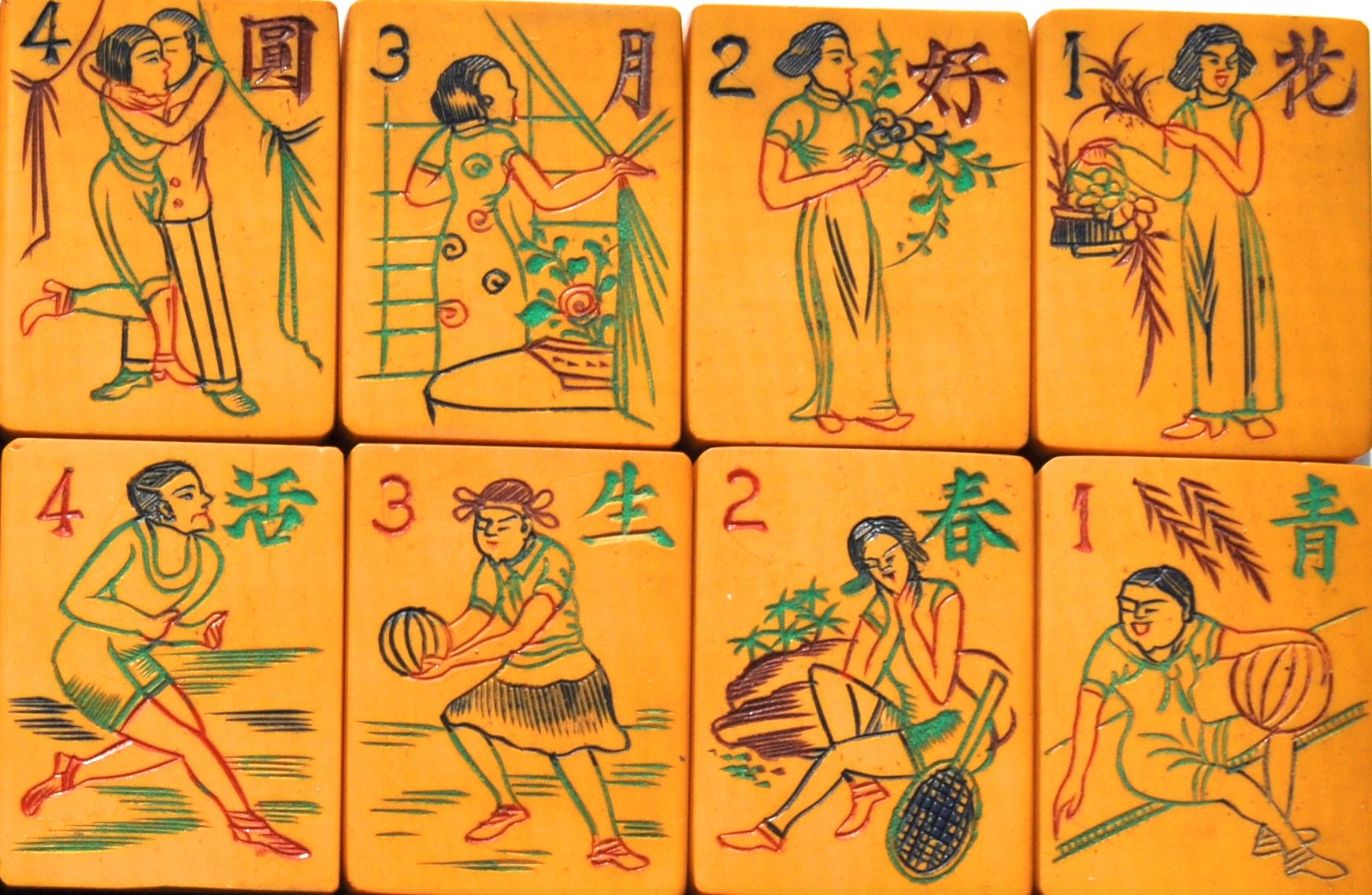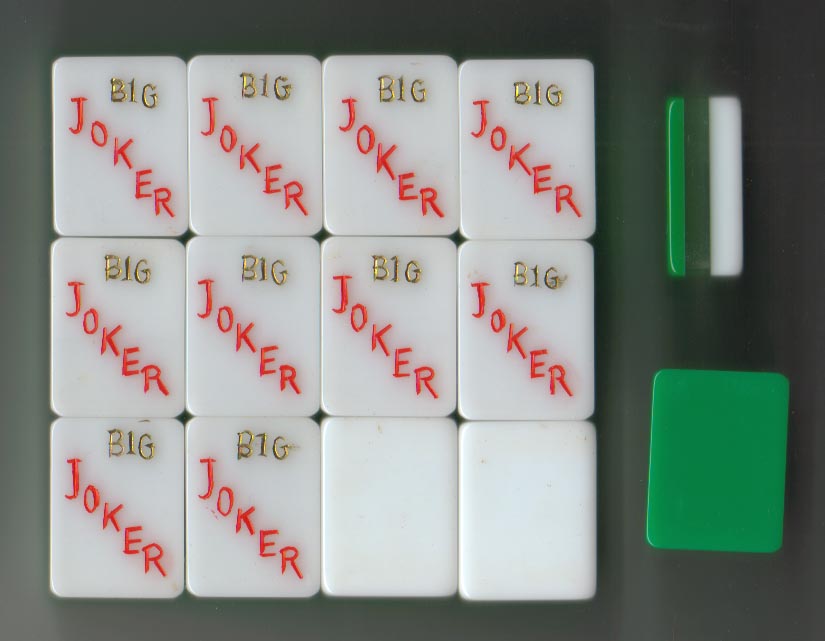Butterflies frequently appear in Chinese art and in Mahjong. The first image you'll see is a black and white photograph of a woman's jacket from the early 19th Century in the collection of the Metropolitan Museum.
but I looked further and found this beautiful color close-up
How beautiful is that? The butterflies are iridescent, multi-patterned and just breath-taking. (thank goodness for color photography!)
And here are some simpler ones, with beautiful patterns nonetheless, on a vase from the late 17th Century, once again from the Metropolitan Museum. The ribbons seen between the butterflies add to the auspiciousness of the butterflies.
Butterflies have a lot of meaning to the Chinese. Many times the symbolism has to do with the way the word is pronounced. Because the pronunciation of the Chinese word is somewhat similar to the word for a man in his 70s, the symbol of a butterfly may refer to that older man. Butterflies can also symbolize joy, summer, and marital happiness, giving the image many meanings.
And here we have butterflies again, in this folk art type set we saw earlier in the blog, with butterflies on the two 2 tiles.
And of course we have one again here:
Tile #2 clearly is a butterfly, but the image on tile #3 has always mystified me.
I wonder if it might be a chrysalis? The butterfly about to emerge?
And I will end the post with a lovely orphan tile, one from a set of creature Flower tiles.
The book I wrote with Ann Israel is being published by Tuttle. To see more about it:
www.mahjonggtheartof thegame.com
To order it click here:
http://www.barnesandnoble.com/w/mah-jongg-ann-israel/1118759459?ean=9784805313237
or here from Amazon
http://www.amazon.com/Mah-Jongg-Collectors-Guide-Tiles/dp/4805313234/ref=sr_1_7?ie=UTF8&qid=1414844427&sr=8-7&keywords=mah+jongg


























